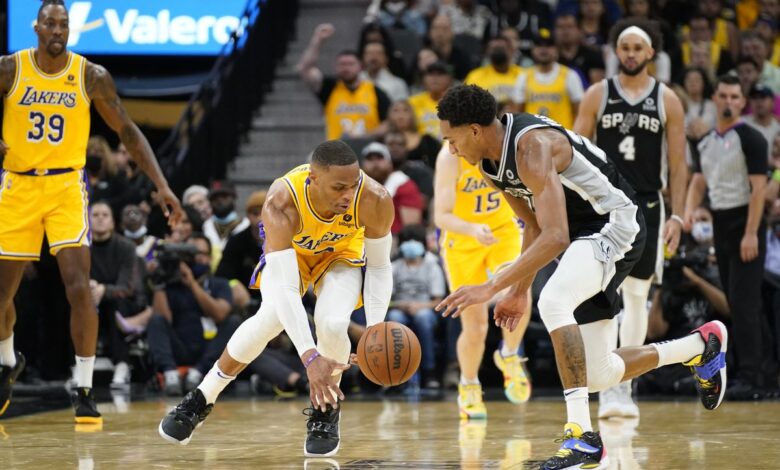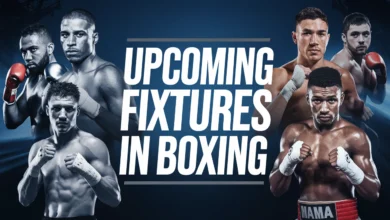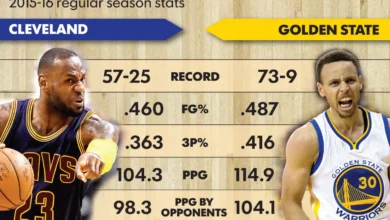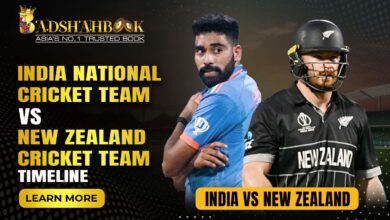The Rivalry That Defined an Era: San Antonio Spurs vs. Los Angeles Lakers

In the history of the NBA, few rivalries have been as intense or influential as that between the San Antonio Spurs and the Los Angeles Lakers. This rivalry, which took center stage during the late 1990s and the 2000s, featured battles between two of the most dominant teams in the Western Conference. Los Angeles Lakers Both franchises were perennial contenders, and their clashes often shaped the NBA playoff landscape, influencing the course of championships. Each encounter was a battle not just for supremacy in the Western Conference, but for the crown of NBA dominance.
In this article, we will delve deep into the history, key moments, and players that defined this rivalry, while examining how it shaped the NBA during a crucial period of basketball evolution.
The Rise of the Spurs and Lakers Rivalry
The roots of the Spurs-Lakers rivalry can be traced back to the late 1990s, when both teams were emerging as powerhouse franchises in the Western Conference. While the Lakers had a storied history of success with stars like Magic Johnson and Kareem Abdul-Jabbar leading them to glory during the Showtime era, the Spurs were a team on the rise, building their identity under the leadership of head coach Gregg Popovich and the towering presence of David Robinson.
However, it wasn’t until Tim Duncan was drafted by the Spurs in 1997 that the rivalry truly began to take shape. Duncan, a generational talent, quickly established himself as one of the league’s most dominant forces. His arrival coincided with the Lakers’ acquisition of two future Hall of Famers: Shaquille O’Neal and Kobe Bryant. This set the stage for a decade-long battle for Western Conference supremacy.
The first major chapter of the rivalry was written in the 1999 NBA playoffs. The Spurs, led by Duncan and Robinson, swept the Lakers in the second round en route to their first NBA Championship. This series marked the beginning of a shift in power in the West, as the Spurs would go on to become one of the league’s most consistent and successful franchises. But the Lakers weren’t done yet, and they would soon reclaim their place at the top.
The Shaq and Kobe Era: Lakers Dominance (2000–2002)
After the Spurs’ triumph in 1999, the Lakers, under the guidance of legendary coach Phil Jackson, entered their own period of dominance. The Shaquille O’Neal-Kobe Bryant duo, arguably one of the most formidable tandems in NBA history, propelled the Lakers to a three-peat from 2000 to 2002, winning three consecutive championships.
During this time, the Spurs were consistently one of the best teams in the league, but they found themselves in the shadow of the Lakers’ dynasty. The two teams met in the 2001 and 2002 playoffs, with the Lakers coming out on top both times. In 2001, the Lakers swept the Spurs in the Western Conference Finals, displaying a level of dominance that was hard to match. O’Neal and Bryant were unstoppable, and the Spurs had no answer for the Lakers’ high-octane offense.
The 2002 Western Conference semifinals provided another intense battle. Although the Spurs fought valiantly, the Lakers once again emerged victorious, winning the series 4-1. The key to the Lakers’ success during this period was the combination of Shaq’s dominance in the paint and Kobe’s scoring prowess. Meanwhile, the Spurs were developing their own blueprint for success, built on defense, ball movement, and the steady leadership of Duncan.
Spurs’ Revenge: The Birth of a Dynasty (2003)
After the Lakers’ three-peat, the Spurs were determined to reclaim their spot at the top. The 2003 season marked a turning point in the rivalry, as the Spurs defeated the Lakers in the Western Conference semifinals, ending the Lakers’ reign. This series was a hard-fought battle that went six games, with Duncan delivering one of the most dominant playoff performances of his career. The Spurs would go on to win the NBA Championship that year, solidifying their place as a true powerhouse in the league.
The 2003 series was significant not only because it ended the Lakers’ championship streak, but also because it marked the beginning of a new era in the rivalry. Duncan, now the undisputed leader of the Spurs, was at the peak of his powers, while the Lakers were beginning to experience internal turmoil, particularly with the growing tension between O’Neal and Bryant. This internal strife would eventually lead to the breakup of the Lakers’ dynasty, opening the door for the Spurs to dominate the Western Conference in the years to come.
The 2004-2005 Seasons: Power Struggles and Rebuilding
The 2004 season was a tumultuous one for the Lakers. Despite reaching the NBA Finals, they were defeated by the Detroit Pistons, and soon after, Shaquille O’Neal was traded to the Miami Heat. The departure of O’Neal marked the end of the Lakers’ dynasty, and the team entered a period of rebuilding. During this time, the Spurs capitalized on the Lakers’ struggles, winning their third championship in 2005.
The 2004-2005 seasons saw the Spurs cement themselves as the dominant team in the West, with Duncan continuing to lead the way, alongside key players like Tony Parker and Manu Ginóbili. The Lakers, meanwhile, were in transition, with Kobe Bryant now the unquestioned leader of the team. Although the rivalry cooled somewhat during this period, it was clear that the Lakers were determined to rebuild and return to the top.
The Kobe and Duncan Era: 2008 Western Conference Finals
The rivalry was reignited in the 2008 season, when the Lakers and Spurs once again faced off in the Western Conference Finals. By this time, both teams had undergone significant changes. The Lakers had reloaded, acquiring Pau Gasol to pair with Bryant, while the Spurs had remained consistent with their core of Duncan, Parker, and Ginóbili.
The 2008 Western Conference Finals was a highly anticipated matchup, as both teams were once again at the top of the Western Conference. The series did not disappoint, as it was a back-and-forth battle between two evenly matched teams. Ultimately, the Lakers prevailed, winning the series in five games and advancing to the NBA Finals. Although the Lakers would lose to the Boston Celtics in the Finals, this series marked the return of the Lakers as a championship contender, and the rivalry with the Spurs was once again at the forefront of the NBA.
2013: The Final Chapter of the Rivalry?
As the 2010s progressed, both the Spurs and Lakers experienced changes. The Spurs continued to be a model of consistency, winning their fifth championship in 2014, while the Lakers entered a period of decline following the retirement of Kobe Bryant in 2016.
The last meaningful playoff matchup between the Spurs and Lakers came in the 2013 playoffs, when the two teams faced off in the first round. By this point, the Lakers were no longer the dominant force they once were, and the Spurs easily swept them in four games. This series marked the end of an era for both franchises, as the Lakers embarked on a long rebuilding process, while the Spurs remained competitive but began transitioning to a new generation of players.
Key Players Who Defined the Rivalry
The Spurs-Lakers rivalry was defined by some of the greatest players in NBA history. At the forefront were Tim Duncan, Shaquille O’Neal, and Kobe Bryant, all of whom were central figures in their teams’ success. Duncan, with his quiet leadership and dominant play in the post, was the heart and soul of the Spurs, while O’Neal and Bryant formed one of the most dynamic duos in NBA history.
Other key players who contributed to the rivalry include Tony Parker and Manu Ginóbili for the Spurs, both of whom played crucial roles in the team’s success during the 2000s. On the Lakers’ side, Pau Gasol, Derek Fisher, and Robert Horry were instrumental in the team’s resurgence in the late 2000s.
The Impact of the Rivalry on the NBA
The Spurs-Lakers rivalry had a profound impact on the NBA during the late 1990s and 2000s. It was a rivalry that was not just about individual matchups, but about contrasting styles of play. The Spurs, known for their discipline, defense, and teamwork, represented a methodical approach to the game, while the Lakers, with their star power and explosive offense, brought a flashier, more dynamic style to the court.
The rivalry also highlighted the importance of coaching, as both Gregg Popovich and Phil Jackson are regarded as two of the greatest coaches in NBA history. Their strategic battles and ability to get the best out of their players were key to the success of their respective teams.
Moreover, the Spurs-Lakers rivalry helped shape the narrative of the Western Conference for over a decade. During this time, no team outside of these two franchises won an NBA championship from 1999 to 2003, underscoring their dominance in the league.
Conclusion
The rivalry between the San Antonio Spurs and the Los Angeles Lakers will always be remembered as one of the greatest in NBA history. It was a rivalry that produced countless memorable moments, from Shaq’s dominance to Duncan’s consistency, from Kobe’s scoring outbursts to Popovich and Jackson’s coaching duels. While both teams have since moved into new phases of their histories, the battles they fought in the late 1990s and 2000s will forever be etched in the annals of basketball lore.
The Spurs and Lakers defined an era of Western Conference basketball, and their rivalry is a testament to the competitive spirit, talent, and excellence that these two franchises embodied.
4o
O



